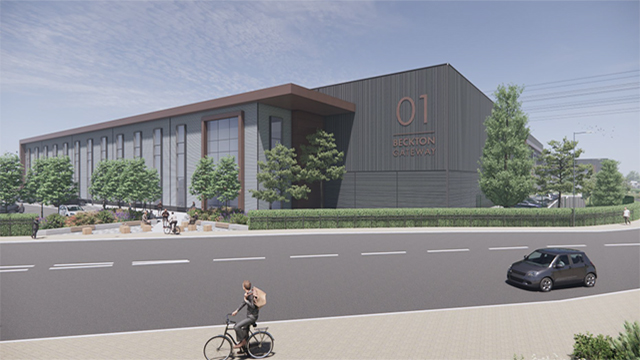Land at Snowdown, Kent, acquired for gypsy caravan site — Claim for land taken and injurious affection — Certificate of
Christopher
Katkowski (instructed by Turner Kenneth Brown) appeared for the claimant; C
Turnbull (instructed by the county solicitor of Kent County Council) for the
acquiring authority.
Giving his
decision, MR REES said: This reference was made by the claimant, the owner of
land at Aylesham Road, Snowdown, Kent, to determine the compensation to be paid
in respect of its compulsory acquisition. The amount claimed for the land taken
was £6,908 and £4,004 for injurious affection. The acquiring authority offered
£1,882 for the land taken and £100 for injurious affection.
Counsel for
the claimant called Mr J V Clarke FRICS [partner, George Webb & Co].
Counsel for the respondent authority called Mr R C H Sheridan BSc (Est Man)
Lond, a principal estate surveyor in its employ.
The relevant
order is the Kent County Council (Aylesham Road, Snowdown) Compulsory Purchase
Order 1978, which was made on July 27 1978 and confirmed on December 10 1979.
The order was made under the Caravan Sites and Control of Development Act 1960
and the Caravan Sites Act 1968. The land was acquired for the purpose of
establishing a caravan site. Notice to treat dated February 29 1980 and notice
of entry dated November 11 1980 were served on the claimant. Entry was taken on
February 2 1981, which thus becomes the valuation date.
There was an
agreed statement of facts and from this I note that the land taken had an area
of about 2.5 acres and it had a frontage to Aylesham Road. Snowdown is a hamlet
close to Snowdown Colliery. The land is close to the Canterbury/Dover railway
line. The north-west boundary of the land is a public bridleway which leads
from Aylesham Road to a small wedge of land not owned by the claimant. This
wedge had a frontage to the railway.
Adjoining the
south-east boundary of the land taken is an area of land of 0.69 acre which is
owned by the claimant and was referred to before me as ‘the severed land’. On
the opposite side of Aylesham Road is land running to about 560 acres which is
owned by the claimant and farmed by him as a single unit.
A gas main has
been laid under part of the severed land and part of the land taken. Following
this work, scrub was removed and gypsy caravans unauthorisedly occupied some of
the land. Attempts were made to remove these occupiers, but the claimant was
requested by Dover District Council (not by the acquiring authority) not to
pursue court proceedings for possession. An application for deemed planning
consent to put caravans on at least part of the subject site was made by Kent
County Council, notice being served on the claimant in 1976. Consent was
granted, but it is agreed between the parties that this enures for the benefit
of the acquiring authority only.
In April 1980
application was made by the claimant with other owners for a certificate of
appropriate alternative development under section 17 of the Land Compensation
Act 1961, and a certificate dated November 17 1980 was issued by Kent County
Council in respect of the land taken, the small wedge of land referred to above
and another small parcel south-east of the land taken (not owned by the
claimant). The certificate was to the effect that planning permission would
have been granted in respect of these lands for:
(a) open recreation uses;
(b) development having a
special local justification, including development directly related to
agriculture or forestry.
At the date of
entry most of the land taken comprised scrub land: there was no substantial
standing timber. The remainder together with the severed land had been cleared
in 1970 for the installation of the gas pipe. On the land there was much
miscellaneous litter including hardcore, tarmac, prams and vehicle parts. The
ground was muddy and heavily rutted by vehicles. The site lies in an area not
scheduled for any development in the Kent Structure Plan approved in 1980,
where it is intended that existing uses for the most part should remain
undisturbed.
No formal
vehicular access existed at the date of entry either to the land taken or to
the severed land, but the parties agreed that an application for access for any
of the uses specified in the certificate of appropriate alternative development
would be successful without undue delay or conditions seriously affecting
value. Similarly, they agreed that access would have been available to the land
taken and would be available to the severed land over part of the land taken.
The parties
further agreed that all the land retained by the claimant was held with the
land taken and that injurious affection, if any, caused by the acquisition of
the land taken for the gypsy site is properly claimable.
Parties’
valuations
Mr Clarke’s
valuation is as follows:
|
Land taken |
|
|
|
|
2.51 acres of freehold land |
£8,785 |
|
|
|
Defer 1 year to obtain |
0.95 |
|
£8,346 |
|
Less cost of removing caravans — estimate |
1,000 |
|
|
|
Grubbing and clearing trees |
437.50 |
|
1,438 |
|
|
|
6,908 |
|
|
Injurious affection |
|
|
|
|
(a) to 0.69 acre, ‘the |
|
|
|
|
0.28 |
|
|
|
|
0.41 |
1,435 |
|
|
|
0.28 |
653 |
|
|
|
2,088 |
|
|
|
|
Defer |
0.95 |
|
|
|
1,984 |
|
|
|
|
Less cost of removing |
500 |
|
|
|
1,484 |
|
|
|
|
No |
— |
|
|
|
Less nominal value of site |
200 |
|
|
|
|
|
1,284 |
|
|
(b) to |
136 |
|
|
|
YP |
20 |
|
2,720 |
|
Total |
|
|
£10,912 |
As to the value of the land taken, Mr Clarke sought to support his
figure of £3,500 per acre by referring to five transactions which had taken
place in 1980 and 1981. Four of the parcels were close to Betteshanger
Colliery, the fifth being on the outskirts of Sittingbourne. The four
transactions at Betteshanger were criticised in cross-examination because of
special circumstances surrounding each one; for example, two parcels had been
purchased by adjoining owners. The land at Sittingbourne was said to have ‘hope
value’.
His choice of
the rate of interest of 5% was also criticised: it was said that it should be
substantially higher. Similarly, the amounts he had allowed for removing
caravans and grubbing and clearing the land were criticised as being too low.
To support his
valuation of the land taken Mr Sheridan [see p 189] relied on 13 transactions
of land which had taken place in the years 1980 to 1984 (both inclusive). These
covered a huge area from Maidstone on the west to Pegwell Bay on the east,
Monkton (about halfway between Canterbury and Ramsgate) on the north and Dover
on the south.
I viewed the
subject land and all but two of the 18 comparables, which all differ widely in
character, location and size from the subject land, but I do not think there
was any disagreement between the two valuers on the view that close direct comparables
were hard to find.
|
Mr Sheridan’s valuation was: |
|
|
|
|
|
Land taken |
|
|
|
|
|
2.51 |
|
|
£1,882 |
|
|
Injurious affection |
|
|
|
|
|
(a) 0.69 acre — ‘the severed land’ |
|
|
|
|
|
Value |
£350 |
|
|
|
|
Value |
250 |
|
|
|
|
Injurious |
|
|
100 |
|
|
(b) Claimant’s remaining farmland 560 acres The |
|
|
|
|
|
Injurious affection |
|
|
nil |
|
|
Total |
|
1,982 |
||
|
Compensation payable, say |
|
£2,000 |
||
|
|
|
|
||
One of the comparables relied on by Mr Sheridan was the
wedged-shaped piece of land adjoining the subject land; however, that has an
area of only 0.43 acre for which the acquiring authority paid £430, but that
figure includes some special costs by way of disturbance. That represents
£1,000 per acre or £750 per acre excluding the special costs. It has no road
frontage and is approached via the public bridleway.
Award for land
taken
The main
difference between the valuers was that Mr Clarke considered that there would
be a demand for the subject land for the purposes specified in the certificate
of appropriate alternative development, ie that the certificate added to the
value of the land. Mr Sheridan’s view was that the certificate added nothing to
the value of the land; there was much similar land to be found in this part of
Kent and the limitation imposed by the word ‘special local justification’ would
restrict the number of potential purchasers.
Taking all the
evidence together and having regard to my views of the comparables, I prefer Mr
Sheridan’s direct approach. Mr Clarke’s figure of £6,908 represents a little
over £2,750 per acre compared with Mr Sheridan’s £750 per acre. I accept Mr
Clarke’s view that there would be a demand for the subject land for the
purposes specified in the certificate of appropriate alternative development,
but I think that the increase in value due to the certificate is very small and
can properly be reflected in an amount per acre. The criticisms levelled at Mr
Clarke’s figure of £3,500 per acre (being too high), the rate of interest and
the figures of costs which he deducted are warranted. On the other hand, I
think Mr Sheridan’s figure of £750 per acre is too low having regard to Mr
Clarke’s comparables and to the settlement made in respect of the adjoining
wedge of land.
I find for a
figure of £1,000 per acre to give £2,510 under this head of claim.
Award for
injurious affection
As to
injurious affection, in respect of the severed land the parties agreed that a
claim for a substantial amount can be sustained. Their opinions as to the
‘after’ value (£200 — Mr Clarke: £250 — Mr Sheridan) are close. Mr Clarke’s
figure of £1,484 represents £2,150 per acre. For the reasons given above in
respect of the land taken, I think that this is too high. Similarly, I consider
that Mr Sheridan’s figure of £350 is too low; it is equivalent to about £500
per acre. I find for a figure of £600 and accept Mr Clarke’s ‘after’ figure of
£200, thus giving a net figure for the severed land of £400.
As to the
adjoining 560 acres of farmland I do not consider that Mr Sheridan’s view that
there is no injurious affection to any of this is correct. There must at least
be some nominal reduction in value as, although this is an area where gypsies
are usually to be found, the unauthorised occupation by caravans (which might
be removed by taking legal action) has been replaced by a permanent caravan
site, but I think that the proper sum would be difficult to arrive at using
such a calculation as is contained in Mr Clarke’s valuation. I propose to allow
a sum of £300 under this subheading.
Thus the total
compensation for injurious affection is £700. That for the land taken being
£2,150, I round off the grand total for the compensation to be paid to give
£3,200. It was agreed that to this should be added a surveyor’s fee in
accordance with scale 5A of the scales of charges of the Royal Institution of
Chartered Surveyors. Provision is made under the relevant statutes for the
payment of interest and the costs of the conveyance.
It is right
that I should record that counsel for the respondent authority made submissions
regarding the operation of the certificate of appropriate alternative
development. He pointed out that the certificate covered the land taken, the
wedged-shaped piece of land adjoining and the small area south-east of the land
taken. Those submissions are only relevant to Mr Clarke’s valuation. Since I
have adopted Mr Sheridan’s approach, albeit using increased figures, I do not
need to comment further on this matter.
Mr Sheridan
expressed the view that, if planning consent were applied for, for the purpose
set out in the certificate of appropriate alternative development, the local
planning authority would only grant consent for one acre of land and, further,
that such a limitation should be taken into account if I were to adopt the
approach used by Mr Clarke. It seems to me that that is not correct: a
condition limiting the area could have been included in the certificate but
none was. Mr Sheridan was therefore seeking to look behind the certificate in a
manner which I do not consider is justified.
Having opened
the sealed offer of compensation lodged by the acquiring authority, I find that
the amount thereof exceeds the amount of my award. By agreement of the parties,
the acquiring authority will pay to the claimant his costs of this reference up
to 10.30 am on September 21 1984 and the claimant will pay the costs of the
acquiring authority thereafter, all such costs unless agreed to be taxed by the
Registrar of the Lands Tribunal on scale 3 of the County Court Scales of Costs.








